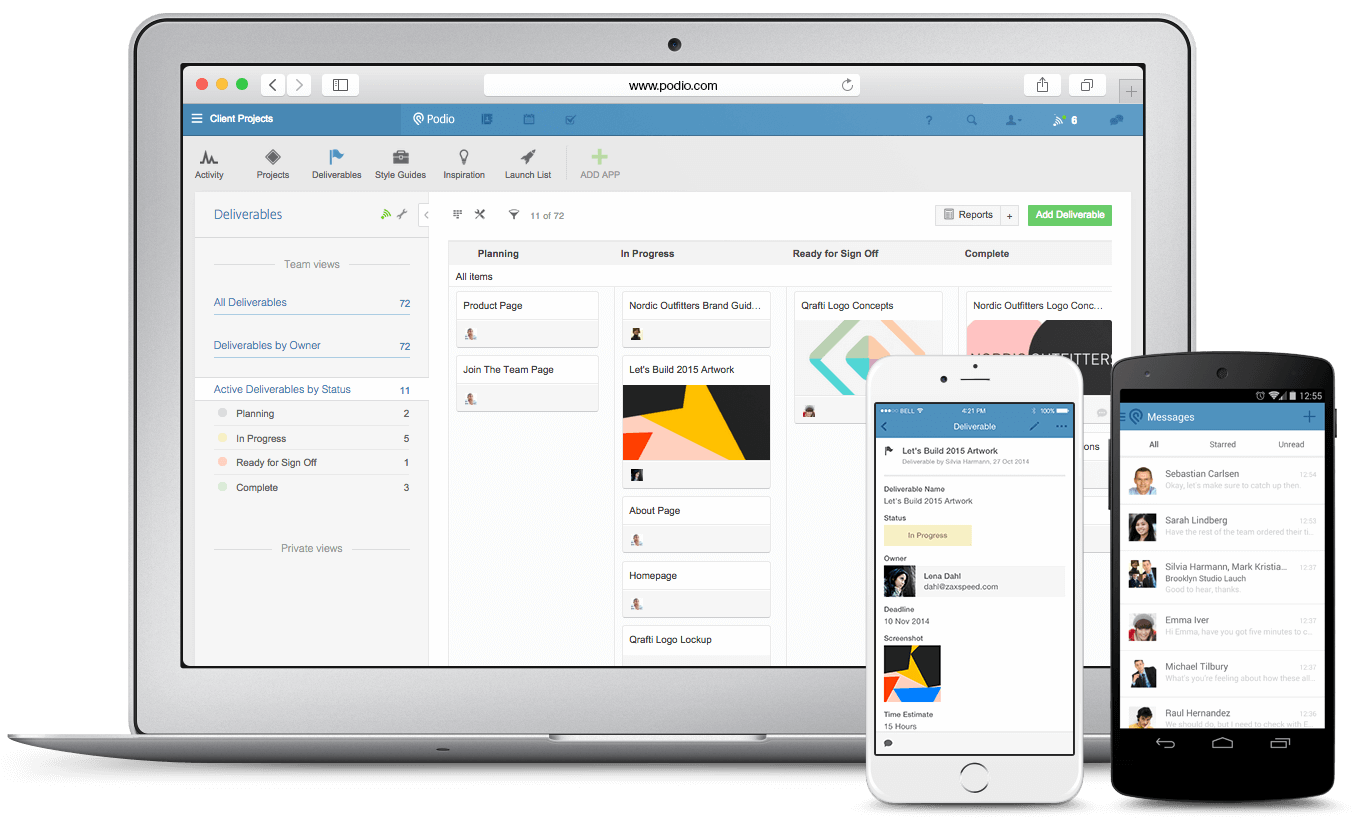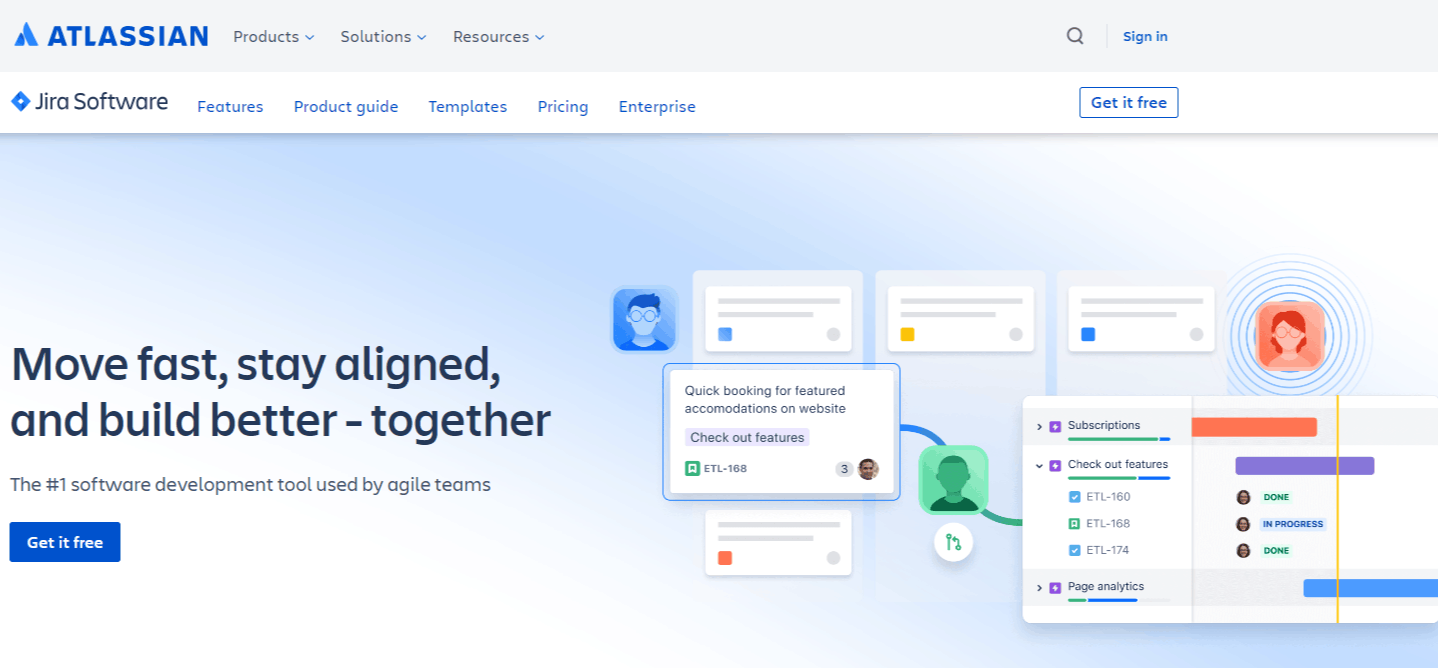In today's fast-paced, digital-centric environment, the concept of collaborative work management (CWM) has emerged as a pivotal strategy for team success. This approach is centered around leveraging the combined knowledge, skills, and efforts of a team to accomplish shared objectives. It's about fostering an environment where collaboration thrives and productivity soars. In this exploration, we'll delve deeper into the essence of CWM, its significance in modern workplaces, and how innovative tools like Boardmix are revolutionizing this space by offering robust solutions designed to streamline teamwork and enhance efficiency.
Part 1. What is Collaborative Work Management?
Collaborative Work Management (CWM) is a comprehensive system that amalgamates various aspects of teamwork - tasks, workflows, and communication - to foster seamless collaboration. It's not just about managing tasks, but creating an environment where ideas flow freely, decisions are made collectively, and goals are achieved collaboratively. At the heart of CWM lies a suite of software tools meticulously designed to facilitate this process. These tools provide a unified platform where team members can not only plan and execute their tasks but also monitor progress in real-time and share resources efficiently. They serve as a digital workspace that transcends geographical boundaries and time zones, enabling teams to work together irrespective of their physical location. By streamlining workflows and enhancing communication, these tools empower teams to work smarter, not harder.
Part 2. What is a CWM Tool?
A Collaborative Work Management (CWM) tool is a sophisticated software solution that creates an integrated, digital workspace for teams to collaborate efficiently and effectively. These tools are equipped with a plethora of features designed to facilitate various aspects of teamwork. This includes task assignment, where responsibilities can be clearly defined and delegated; progress tracking, which allows for real-time monitoring of project timelines and milestones; document sharing capabilities for easy access to vital information; and real-time communication features that enable instant dialogue and feedback.
But these tools go beyond just providing functional support - they play a pivotal role in shaping the organizational culture. By promoting transparency, they ensure every team member has visibility into what others are working on, fostering accountability. They break down silos within organizations by enabling cross-functional collaboration and encouraging shared responsibility towards common goals. In essence, CWM tools are not just about managing work but about transforming how teams work together in the pursuit of collective success.
Part 3. Why Use a CWM Tool?
Utilizing a Collaborative Work Management (CWM) tool can bring about numerous benefits that significantly enhance team productivity and efficiency. Here are some key advantages:
Improved Productivity: CWM tools streamline workflows by centralizing tasks, communication, and resources in one place. This reduces the need for unnecessary meetings or lengthy email threads, freeing up time for actual work.
Enhanced Transparency: These tools provide real-time updates on project status and deadlines, ensuring everyone is on the same page. This transparency helps prevent misunderstandings and keeps all team members informed of progress.
Visibility into Contributions: By tracking tasks and progress, CWM tools offer visibility into each team member's contributions towards team objectives. This fosters accountability and can help identify areas of strength or improvement.
Better Communication: With integrated communication features like chat or comment sections, these tools facilitate instant dialogue between team members, promoting better collaboration.
Reduced Silos: CWM tools break down organizational silos by enabling cross-functional collaboration. They foster a culture of shared responsibility where everyone works towards common goals.
Increased Flexibility: Many of these tools are cloud-based, allowing teams to collaborate from anywhere at any time - an essential feature in today's remote working world.
Integration Capabilities: Most CWM tools can integrate with other software like CRM systems or file storage platforms, further enhancing their functionality and making them a one-stop solution for all collaborative needs.
Part 4. Best 7 Collaborative Work Management Tools in 2024
As we cast our gaze towards the future, specifically the year 2024, it's an opportune time to delve into an exploration of some of the most effective and innovative Collaborative Work Management (CWM) tools that are currently shaping the market.
1. Boardmix
Boardmix, a rising star in the realm of Collaborative Work Management (CWM) tools, distinguishes itself with an intuitive interface that makes navigation a breeze even for first-time users. Its extensive library of drawing templates is another standout feature, offering a diverse range of options to facilitate visual collaboration and bring ideas to life.
Here are some key features that make Boardmix a compelling choice:
- Real-Time Collaboration: Boardmix allows multiple users to work on the same project simultaneously. This real-time collaboration capability ensures ideas and feedback can be shared instantly, keeping everyone on the same page.
- Easy-to-Use Design Tools: With its user-friendly design tools, Boardmix makes it easy for anyone to create visually appealing and informative diagrams or charts - no design expertise required.
- Robust Security Measures: Understanding the importance of data security, Boardmix implements robust security measures to protect your information. You can collaborate with peace of mind knowing your data is secure.
- Excellent Customer Support: Boardmix prides itself on its responsive and helpful customer support team. Whether you have technical queries or need assistance with using the tool, their support team is always ready to assist.
- Extensive Template Library: From flowcharts to mind maps, Boardmix's extensive template library caters to various visual collaboration needs - making it easier than ever to visualize complex ideas or processes.
Customer reviews consistently highlight how user-friendly and efficient Boardmix is in facilitating teamwork. Its commitment to enhancing collaborative efforts through innovative features has made it a favored choice among teams looking for effective CWM solutions.
2. Slack
Slack is a powerful collaborative work management tool that excels in real-time communication. It offers instant messaging capabilities, allowing team members to quickly share updates, ask questions, and discuss projects. Channels can be created for different topics or teams, ensuring relevant conversations are organized and easy to find. Additionally, Slack integrates with a multitude of other tools such as Google Drive and Asana, further enhancing its functionality.
- Pros: Excellent for real-time communication; robust integration capabilities.
- Cons: Can be overwhelming due to constant notifications; file management could be improved.
3. Microsoft Teams
Microsoft Teams, a key component of the Office365 suite, serves as an all-encompassing platform for team collaboration. It seamlessly integrates chat, video meetings, and file storage (including the ability to collaborate on Office documents in real-time), along with a host of app integrations. Its deep-rooted integration with other Microsoft products creates a unified ecosystem that enhances workflow efficiency. This makes it an exceptional choice for organizations that are heavily invested in the Microsoft ecosystem, providing them with a familiar and cohesive environment to facilitate their collaborative efforts.
- Pros: Deep integration with Office365; comprehensive feature set.
- Cons: User interface can be confusing; occasional technical issues reported by users.
4. Zoom
Zoom has emerged as a household name in the realm of video conferencing, an indispensable facet of collaborative work management in today's increasingly remote working environment. It is renowned for its high-quality video calls that facilitate clear and effective communication. But Zoom's capabilities extend beyond just video calls. It also offers features like screen sharing, which allows for real-time collaboration; breakout rooms for focused group discussions; and webinar capabilities to host large-scale virtual events. These versatile features make it a comprehensive tool catering to a wide array of collaborative needs in the digital age.
- Pros: Reliable video conferencing; versatile features.
- Cons: Security concerns have been raised in the past; requires stable internet connection for optimal use.
5. Podio
Podio stands out as a unique collaborative work management tool that offers customizable workspaces. This allows teams to design their workflows using apps specifically tailored to meet their unique needs and project requirements. It supports a wide range of functionalities including task management, calendar scheduling, and file sharing within these custom apps. The flexibility offered by Podio is its standout feature, enabling it to cater to diverse project requirements and making it an adaptable solution for teams with varying workflow designs and collaboration needs in the digital workspace.
- Pros: Highly customizable; supports diverse workflows.
- Cons: Steeper learning curve due to customization options; limited customer support.
6. Trello
Trello harnesses the power of Kanban boards for task and project management, providing a visually intuitive platform to track progress. In Trello's system, individual tasks are represented by cards that can be easily moved across different lists, each representing various stages of a process. This visual approach simplifies the tracking of tasks from inception to completion, making it easy for team members to understand their responsibilities and the overall project status at a glance. Its simplicity coupled with effectiveness has made Trello a popular choice among teams seeking straightforward yet powerful project management tools.
- Pros: Visually intuitive; simple yet effective task tracking.
- Cons: Limited features compared to more robust project management tools; not ideal for complex projects.
7. Jira
Jira is widely recognized as an issue tracking system, but its capabilities extend far beyond that, making it a robust tool for collaborative work management. It's particularly beneficial for software development teams that follow Agile methodologies. Jira supports planning sprints, assigning work, tracking progress, and releasing software - all within one unified platform. This comprehensive approach allows teams to manage their entire workflow in a single place, from initial planning stages to the final release of software. Its specialized features tailored towards Agile processes make Jira an indispensable tool for modern software development teams.
- Pros: Powerful issue tracking system; ideal for Agile software development.
- Cons: Can be complex to set up and use; may be overkill for non-software development teams.
Conclusion
In conclusion, harnessing the power of the right Collaborative Work Management (CWM) tool can fundamentally transform how your team collaborates, boosting productivity and fostering a culture of shared responsibility. While each tool in the market has its unique strengths and potential areas for improvement, Boardmix stands out with its distinct emphasis on visual collaboration. Its intuitive interface, extensive template library, and real-time collaboration capabilities make it an ideal choice for teams aiming to elevate their collaborative endeavors to unprecedented heights in 2024. By choosing Boardmix, teams can look forward to a more streamlined, efficient, and visually engaging collaborative experience.









